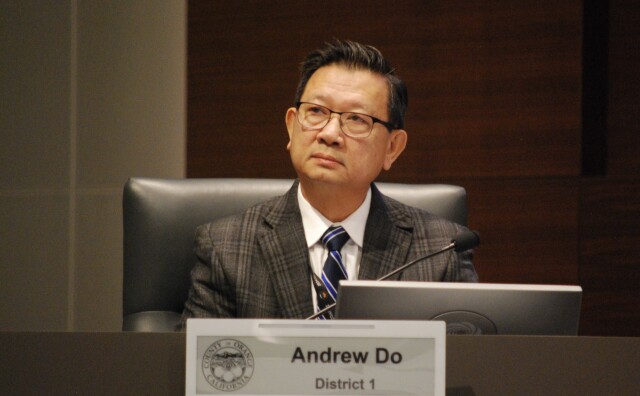This fall, California voters will decide whether to increase the state’s minimum wage by $2 to $18 an hour. The ballot initiative is the latest in a flurry of efforts to raise wages for workers in the Golden State.
Official title on the ballot: Proposition 32: Raise Minimum Wage. Initiative Statute.
You are being asked: Should California increase its minimum wage from $16 an hour to $18 an hour. The proposal would increase the minimum wage at different speeds depending on the size of a company. For employers with 26 or more employees, the minimum wage would go up on Jan. 1, 2025. For smaller companies, it would go up on Jan. 1, 2026. Yearly increases thereafter would be tied to the consumer price index.
-
A “yes” vote means: The minimum wage would go up.
-
A “no” vote means: The minimum wage would stay the same.
Understanding the $18 minimum wage initiative
Right now, there’s a patchwork of minimum wage laws around California, with most cities having no minimum wage at all and relying on the state statute.
A few cities pay more than $18 an hour, including West Hollywood, Berkeley and San Francisco.
On July 1, the minimum wage in Los Angeles will increase to $17.28. It goes up each year based on increases in the consumer price index. Meanwhile, hospitality workers at hotels with 60 or more rooms in the city will soon make more than $20 an hour because of a measure approved by the city council last year.
-
The consumer price index is one of the most commonly cited measures of inflation. The federal government tracks the cost of a wide variety of goods and services — things like food, transportation, medical care and housing — and calculates how much that cost is increasing over time. Rent control policies often tie allowable increases to changes in the local consumer price index. The upshot is that when inflation rises in Southern California, so do allowable rent increases.
How we got here
In recent years, the labor movement has targeted individual industries for pay raises.
- In March, voters in Long Beach approved a labor-backed measure raising the minimum wage for hotel workers in the city to $23 an hour starting in July with an escalator to $29.50 an hour by 2028. It's the highest minimum wage in the country, according to the L.A. Alliance for a New Economy.
Make It Make Sense: Election 2024 Edition
- In April, a new state law mandated that fast food chain workers across California receive at least $20 an hour. The law applies to people who work at restaurants with at least 60 stores nationwide. California is home to the largest number of fast food workers in the U.S. The state is still working out the details of who will benefit from the new law, according to CalMatters.
- On July 1, a new law will begin a gradual increase of the minimum wage for healthcare workers across California. The law calls for yearly increases with health care facilities expected to reach $25 per hour by June 1, 2028, and for some rural facilities by 2033.
-
Worker and Employer Resources
- The state Department of Industrial relations has published an FAQ for workers in the fast food industry.
- Here’s more information about the minimum wage for workers in L.A. County.
- L.A. County has also published information for employers regarding the minimum wage.
What people who support it say
For hundreds of thousands of workers, the pay boost could be much needed relief amid high housing, food and gasoline costs in the state.
-
City of Los Angeles
- City Council: Vote for districts 2, 10 and 14.
- Charter Amendment ER: A package of ethics reforms designed to fight corruption at City Hall. Plus: Charter Amendments DD, FF, HH and II.
L.A. County
- Board of Supervisors: Measure G would dramatically overhaul county government.
- District Attorney: Criminal justice reform, or more law-and-order justice?
- LA Unified school board: Voters are also deciding on a $9 billion facilities bond and a redistricting measure.
- School district measures: Schools have a lot of repair needs.
- Superior Court judges: Plus: Tips to make sure you're putting right person on the bench.
Statewide races
- Whoa! There are 10 propositions on the ballot. Here's your cheat sheet to Props. 2, 3, 4, 5, 6, 32, 33, 34, 35 and 36.
Jump to the full Voter Game Plan for dozens more races ▶
The vast majority of L.A. County’s 88 cities rely on the state’s minimum wage.
“Regular working people can hardly afford to keep food on the table for their families and I think raising the minimum wage is a baby step in the right direction,” said Brian Justie, a senior researcher at the UCLA Labor Center.
Justie understands concerns about the measure's impact on small businesses.
“I have some amount of sympathy for small businesses,” Justie added. “I think if you can’t afford to pay your employees a living, dignified wage then you probably don’t have a viable business model.”
What people who oppose it say
Business interests don't like the measure.
“We think this is just another unfortunate scheme by progressives and labor unions to put small businesses out of business and send more people to the unemployment line,” said John Kabateck of the National Federation of Independent Business. Kabateck is the California director of the federation, which represents about 14,000 small and independent businesses in the state.
He added that “no minimum wage job is expected to be a long term job.”
Cram session
During AirTalk's Ballot Cram Session live event, Larry Mantle talked with Caltech's Michael Alvarez, Pomona College's Sara Sadhwani and Claremont McKenna College's Zachary Courser about Proposition 32.
What state analysts say
An analysis by the state Legislative Analyst's Office estimates the measure would increase costs for many businesses, which in turn “likely would raise the prices they charge for the things they sell.”
The LAO report also states the measure would increase costs for local governments while also lowering the number of people on public assistance. An estimated 2 million workers statewide are expected to be affected by the measure.
A separate LAO report looked at the minimum wage and workers. It found:
- For a single parent with three children, the statewide minimum wage is right around the poverty level. For a single parent with four or more children (not shown in the figure), the minimum wage is below the poverty level.
- For a single parent with one or two children, the statewide minimum wage is somewhat higher than the poverty level.
- For the most common types of low-wage workers — those who do not have children or who live with at least one other worker — the minimum wage is at least two times the poverty level.
Factoring in housing costs, the LAO found “housing in California’s major metro areas and much of the Central Coast is unaffordable for minimum-wage workers.”
Under federal guidelines, households that pay more than 30% of their income toward housing are considered to fall into the “unaffordable” category.
The backstory
The man behind this year’s minimum wage increase measure is Joe Sanberg, an early investor in the meal delivery service Blue Apron. Sanberg is the co-founder of Aspiration Inc., an online banking and investing firm.
Sanberg initially tried to get a minimum wage increase on the 2022 ballot, spending more than $10 million, but missed a key deadline. Secretary of State Shirley Weber, after verifying Sanberg had collected enough signatures, then placed the measure on the 2024 ballot.
According to his online biography, Sanberg was raised by a single mom who struggled to make ends meet on her public school teacher salary. His family lost their home to foreclosure after falling deeply into debt.
“Even though his own family was able to escape the cycle of poverty, Joe knew there were millions of families like his who were living paycheck-to-paycheck, struggling to put food on the table and draining their bank accounts any time they had an unexpected expense,” his bio states.
Sanberg first got into California politics by lobbying for the state to create its own Earned Income Tax Credit for low to moderate wage earners, known as CalEITC, in 2015.
Sanberg did not respond to a request for an interview.
Gov. Gavin Newsom has yet to take a position on the ballot measure.
A USC Dornsife/Price Center for Urban Politics and Policy poll released in January found a majority of the state’s voters support an increase in the state minimum wage. When asked if they would support an increase to $18/hour, 59% of likely voters supported; 34% opposed; and 8% said they
didn’t know.
Listen in: Prop. 32 discussed on AirTalk
Follow the money
Before you read more, we wanted to take a moment to tell you about our mission here at LAist, and why we're so dedicated to helping you get ready to vote.
In the lead-up to this important election, our hard-working reporters and editors spent hundreds and hundreds of hours researching and writing these detailed guides and fact-based resources. We invested that time because we're here to help you vote confidently and make your community a better place.
But we cannot do this essential work without your help. We rely on donations from readers like you to stay independent, which keeps our nonprofit newsroom strong and accountable to you.
At a time when the need for local journalism has never been greater, many newsrooms are facing cutbacks, including LAist. Member support — your support — is what will sustain a free press in Southern California.
LAist’s mission is to be here for you, so please be here for us now with a donation to power our trusted local reporting. Step up right now and make the choice to give. Because that’s exactly what it is — a choice. It's choice with consequences. If readers do not choose to step up and donate, the future of fact-based news in Southern California will not be as strong.
No matter what happens in the world, LAist will remain a voice you know and trust.
Thank you for your generous support.
Sincerely,
-
(she/her)

This voter guide originally published Aug. 15.








